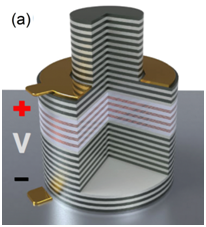Single polariton nonlinearities

Exciton polaritons are composite quasiparticles resulting from the strong coupling of cavity photons and quantum well (QW) excitons embedded within a microcavity (MC) [1]. Polaritons interact nonlinearly due to their excitonic component and can form macroscopically coherent condensates [2]. They are scalable to form arrays by either etching [3] or optical patterning [4] of the microcavity. However, in the presently studied systems, polariton-polariton interaction energy is smaller as compared to their line-broadening.
The goal of this project is to achieve nonlinear quantum regime in photonics where the single-site effective photon interaction energy is larger than the losses. This will open a plethora of interesting phenomena such as photon blockade, photon crystallisation and opportunities to realize quantum simulators for the study of condensed matter problems such as Mott-insulator to superfluid phase transitions in arrays of optical cavities. So far, the lack of scalable devices with sufficient nonlinearities and low-enough losses has been the main obstacle for the experimental realization of these phenomena. There are two approaches towards overcoming this problem: manufacturing higher quality microcavities or enhancing the polariton nonlinearities. Here, we employ electrically driven MC and exploit quantum confined Stark effect (QCSE) to form dipolar polaritons and tune exciton-exciton interaction[5]. Furthermore, we implement spatial lateral confinement in sub-μm pillars to squeeze and enhance further polariton-polariton interactions to achieve single polariton nonlinearities.
[1] C. Weisbuch,M.Nishioka, A. Ishikawa, and Y., Arakawa, Phys. Rev. Lett, 69, 3314 (1992).
[2] J. Kasprzak et al., Nature, 443, 409 (2006).
[3] T. Gao et al., , Phys. Rev. B 85, 235102 (2012).
[4] G. Tosi et al., Nat. Phys. 8, 190 (2012).
[5] S.I. Tsintzos et al., Phys. Rev. Lett. 121, 037401 (2018)